How to make 3D AI Cup Configurator on Three.js and React.js [Part 3]


9 min read
Geometry panel implementation
Now let’s move on to the implementation of the Geometry panel. Here everything is simple. In the GeometryList.tsx component add a click handler for each GeometryItem to make it look like this:
tsx
In this case, the possibilities of optimizing the component are clearly visible, so I suggest to think about how it can be done. And then continue the development of the configurator.
Patterns panel implementation
Let’s check that everything works and move on to the implementation of the Patterns panel. To do this, go to the SetPatternButton.tsx component and add a handler for clicking on a pattern. Everything here is as simple as that:
tsx
Backgrounds panel implementation
Check that everything works and move on to the implementation of the Backgrounds panel, which is very similar. To do this, go to the SetBackgroundButton.tsx component and add a backgroud click handler. Everything here is as simple as that:
tsx
And check that everything is working as expected:
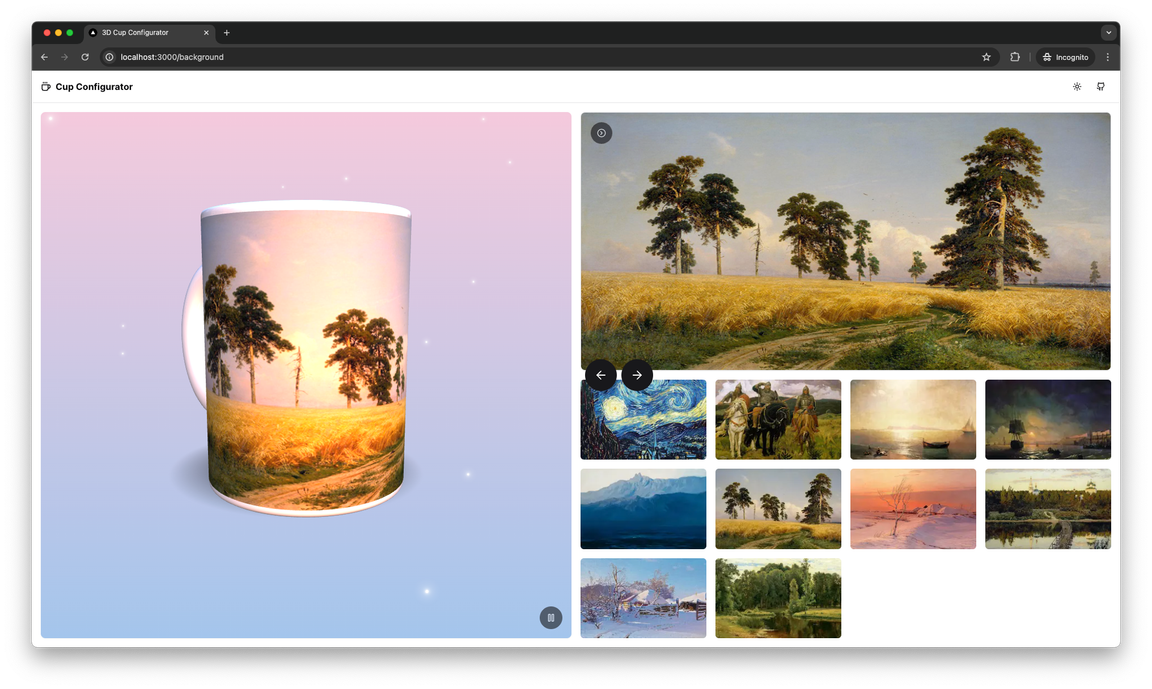
It’s incredibly beautiful!
Implementation of dialog component for AI image generation
Then the last panel is a component for generating images using AI service - GenerateAiImageDialog.tsx. Before starting to implement it, first create .env.local file in the root directory of the project and copy into it 2 environment variables from .env.example file, which is located in the same directory.
As of the date of this article, the API key can be created on the API Settings tab of your personal cabinet after registration:
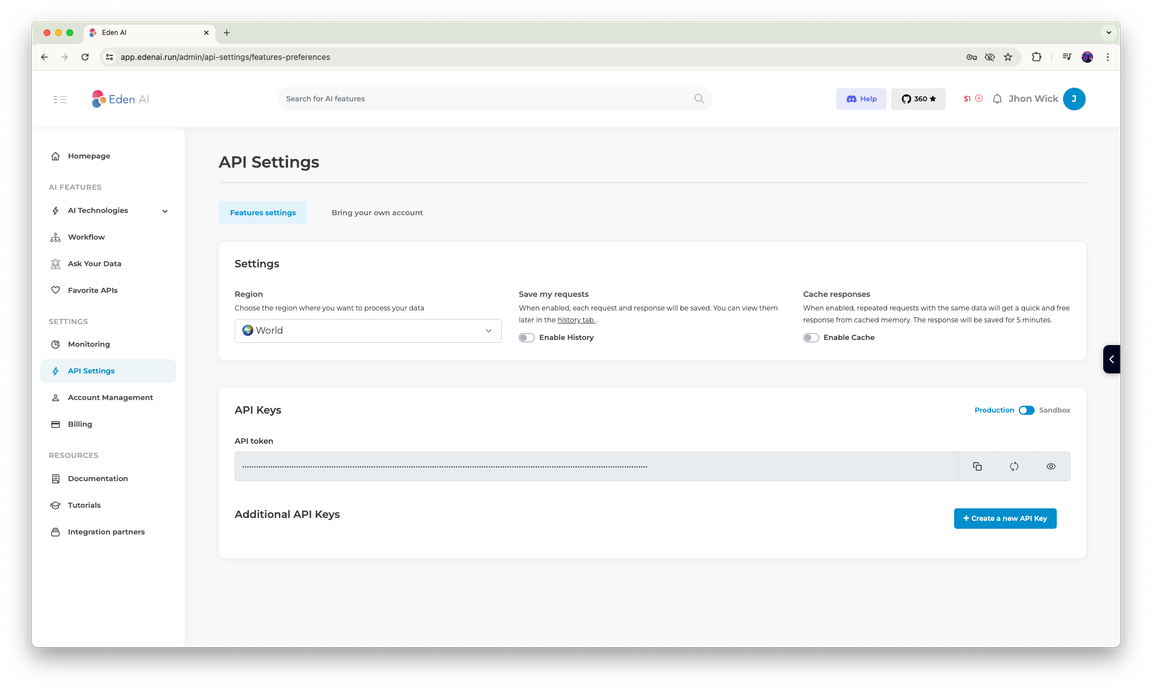
In my case, the environment variables look like this:
text
After that, the GenerateAiImageDialog.tsx component will look like this:
tsx
Enter the prompt in the appropriate field and click the “Generate” button:
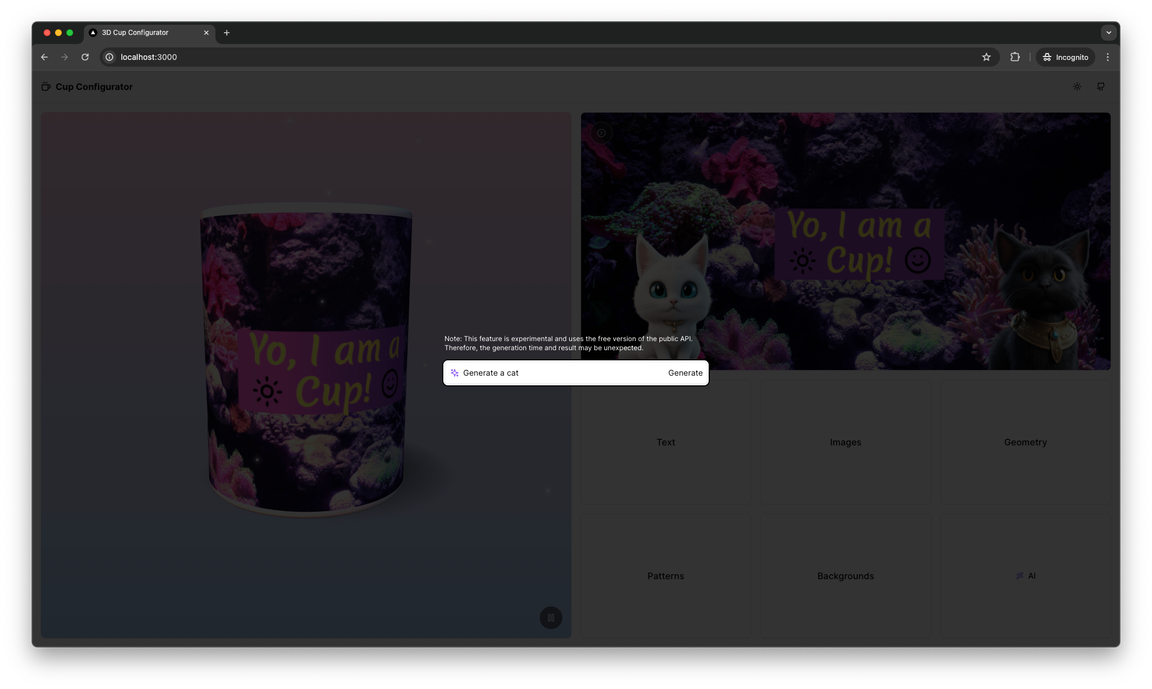
Here is the response result generated by the AI service for the “Generate a cat” prompt using the component just created:
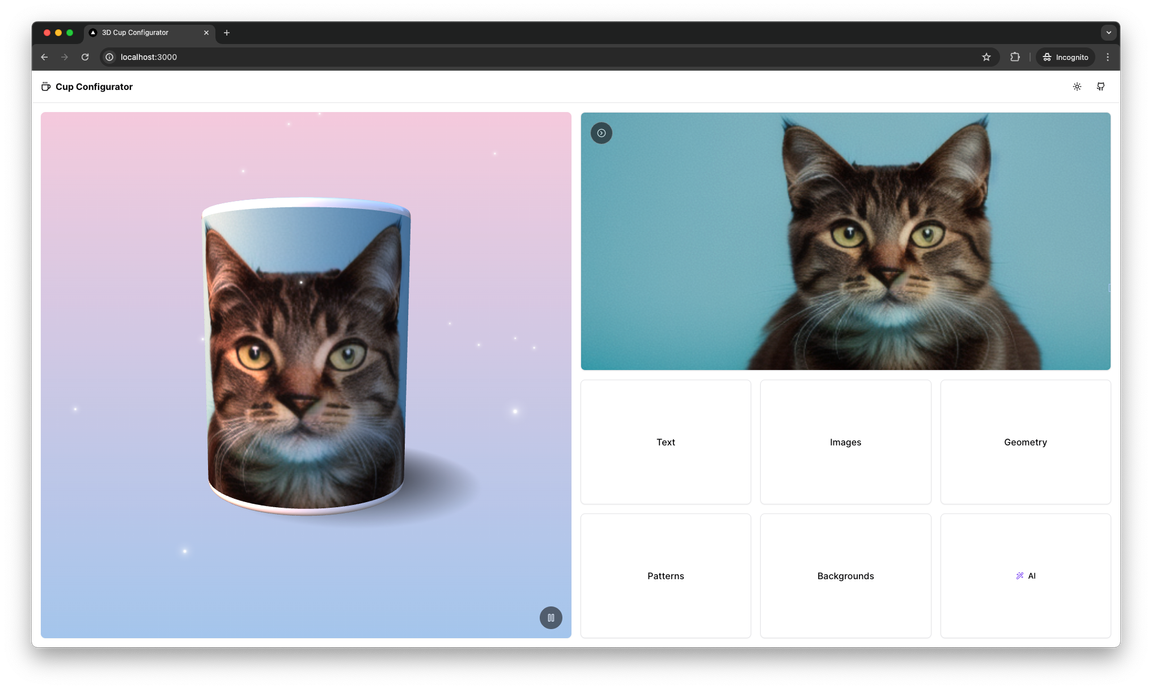
Pretty cute kitty! Now let’s move on to the last point of the plan and publish the source code of the project in the Github repository and deploy the project to Vercel. To do this, you should already have a Github account with a repository created for the project.
Code publishing and deployment
In my case, the commands to publish the project on Github are as follows:
text
Then create a new or log in to an existing Vercel account and create a new project and link it to the newly created repository with the project code sourced on Github. Having previously granted all necessary permissions to the Vercel service on Github:
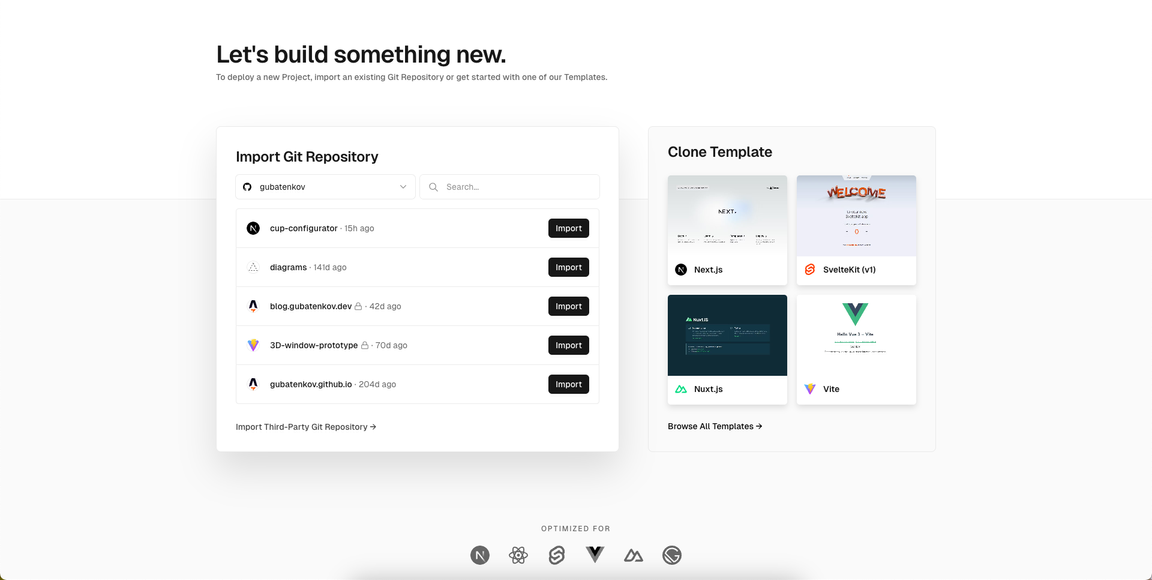
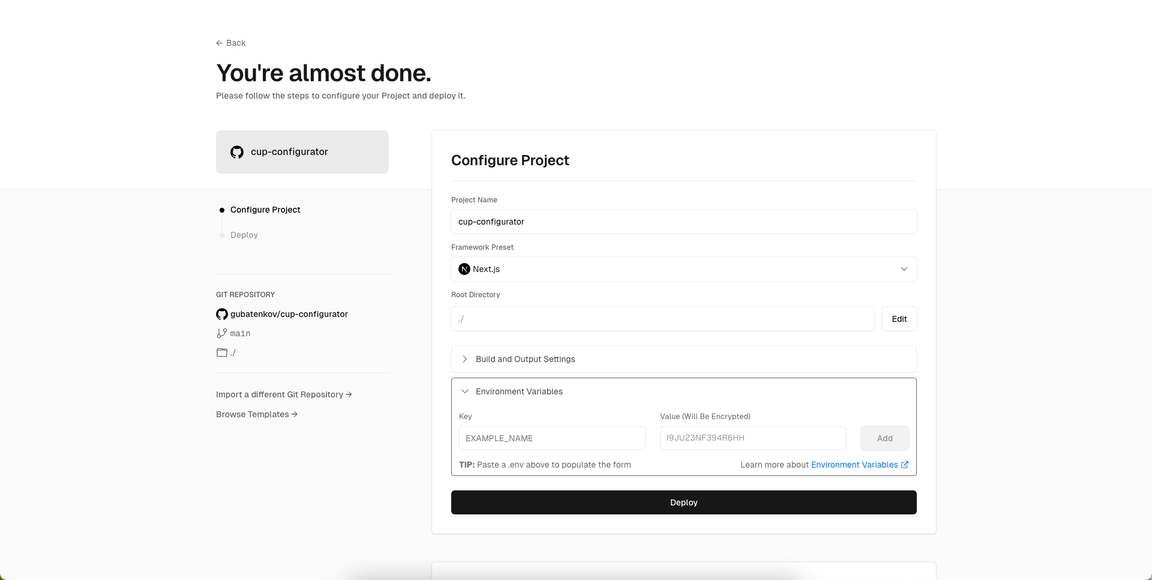
If everything is done correctly, click Deploy and wait for the service to deploy our project and provide a link to the live version of the application.
In my case it is: cup-configurator.vercel.app
Conclusion
In this article we successfully completed the development of the planned functionality for the 3D cup configurator using Three.js, React.js and Next.js. Despite this, you can always independently expand the functionality of the application, as much as your imagination permits.
Above, I have shown how modern frontend technologies can be combined to create interactive and dynamic web application that can benefit business companies reach their target audience and benefit both.
This article is especially will be useful for frontend developers, who want to improve their development skills in the 3D web development direction. Experiment, explore and keep discovering new possibilities!